The invitation to Prada’s AW23 menswear show was a white pillow, accompanied by a cushion cover in what could be one of Prada’s archival ugly-chic prints. It seemed to suggest the idea of sleeping — or even dreaming. In actual fact, Miuccia Prada and Raf Simons’ latest show was an exploration of reality, aptly titled ‘Let’s Talk About Clothes’. The idea was to take the most recognisable sartorial archetypes and transform their meaning through language. Talking about clothes, however, belies the very point of them: they’re to be worn, after all; you can speak through them. And although this collection was framed as a dialogue, its strength was in its simplicity. The collection wasn’t a rambling monologue. In fact, if the looks were sentences, they’d be sparse, to-the-point statements, descriptive without using too many adjectives.
It all started with the greatest menswear archetype of all: the suit and tie. Wide-shouldered and yet somehow svelte, the suits came in myriad shades of grey — but what lay beneath was more interesting. Above bare chests, there were fleeting mentions of wing-collared shirts tucked into cardigans, reduced to collars that were tucked into the charcoal lapels. They came in typically Prada-ish colour combinations — the nostalgic warmth of 70s neutrals paired with synthetic, zingy bubblegum pinks and parrot greens — and of course, there were prints lifted from previous seasons, almost like fragments of memories. It set the tone for a collection that was all about reduction, contrast and directness.
Just don’t call it minimalism. After the show, Raf explained that he preferred the words ‘ reduction’ and ‘calm’. “When you think minimalism — in terms of clothes, but also in terms of environment — it’s very quickly received as cold and distanced,” he reflected, clutching a bottle of Coke Zero. “And so we also want to actually do the opposite, and raise the idea of comfort, warmth and the human body.” Some of the looks, like elongated versions of archetypical outerwear – parkas, MA-1 bombers, duffel coats, donkey jackets — came in constantly contracting proportions, and most of the looks were styled with bare chests.
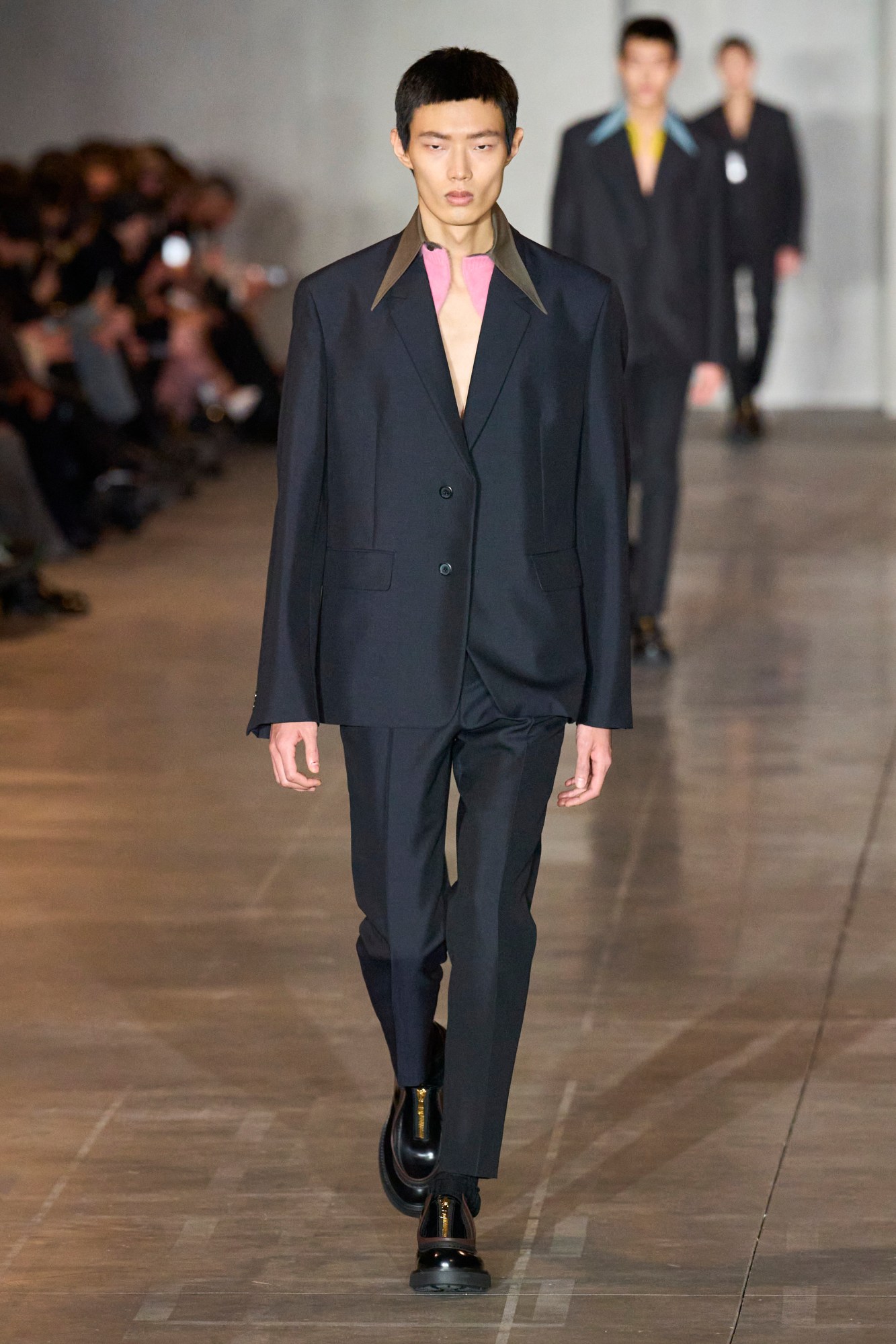
‘Contrast’ was the word that Raf kept circling back to — and what could be seen in the clothes was also articulated in the set. Designed by Rem Koolhaas, it was almost unnoticeable at first that the Deposito of the Fondazione Prada was transforming from a low-ceilinged concrete cave to a vast ballroom warmly lit by Murano chandeliers. As if by magic, the ceiling rose up slowly, seamlessly shifting the space from industrial brutalism to Milanese grandeur. In turn, it shifted our perspective on the clothes. As always with Prada — a brand that has named its latest fragrance ‘Paradox’, once coined the term ‘ugly-chic’, and has always embodied the contradiction of being both anti- and hyper-fashion — it all served to suggest that not everything is as it seems and that there’s more to something than what a stereotype implies. Also, that context is everything.
We are living in uncertain times, after all. Despite the fact that the winds of recession are swirling into a global hurricane, the picture outside the show couldn’t have been further removed from this ominous reality, with thousands of teenagers screaming after the K-Pop band ENHYPEN. Of course, this was neither a concert nor a protest; fashion shows are now pop culture events, and it’s never been a more confusing time to predict how fashion will hold an increasingly distracted consumers’ attention in months to come. Will quiet fashion cut through all the noise of screaming? Will those crowds of teenagers be enticed by what’s on the catwalk, rather than just who’s sitting front row? The irony is not lost that the greatest contrast of all at the show was between the pandemonium outside and the calmness of the collection inside.
That said, it says a lot that two of the most emotionally intelligent designers in the world, Miuccia and Raf, are exploring the notion of reduction at a time of hyperinflation. Prada has historically been a house that has offered a counterpoint to ostentation and vulgarity; it had its first global success at a time of recession in the early 90s with its anti-logo nylon bags. “We always talk about reality, and we, as designers, are very aware of what is happening, the problems, the difficulties,” explained Miuccia in the show notes. “It is a complicated moment in the world — and we react to it. The most honest thing we can do is to create something useful for people today, to face reality in, and frame the idea of our reality through clothes.”
You can see why workers’ uniforms resonated with that sensibility. If the show opened with the white-collar uniform — suits and ties — then it ended with the blue-collar equivalents. There were cognac-coloured suede apron dresses, coats with ostensibly high-vis strips worn by urban delivery cyclists and rectangular holdall bags in silver leather resembling the anti-slip stainless steel most commonly found on construction sites. After all, one man’s uniform is another man’s formalwear. I could write a whole book about that, but naturally, Mrs P and Raf have perfectly articulated it. In more ways than one, this collection spoke volumes about clothes.
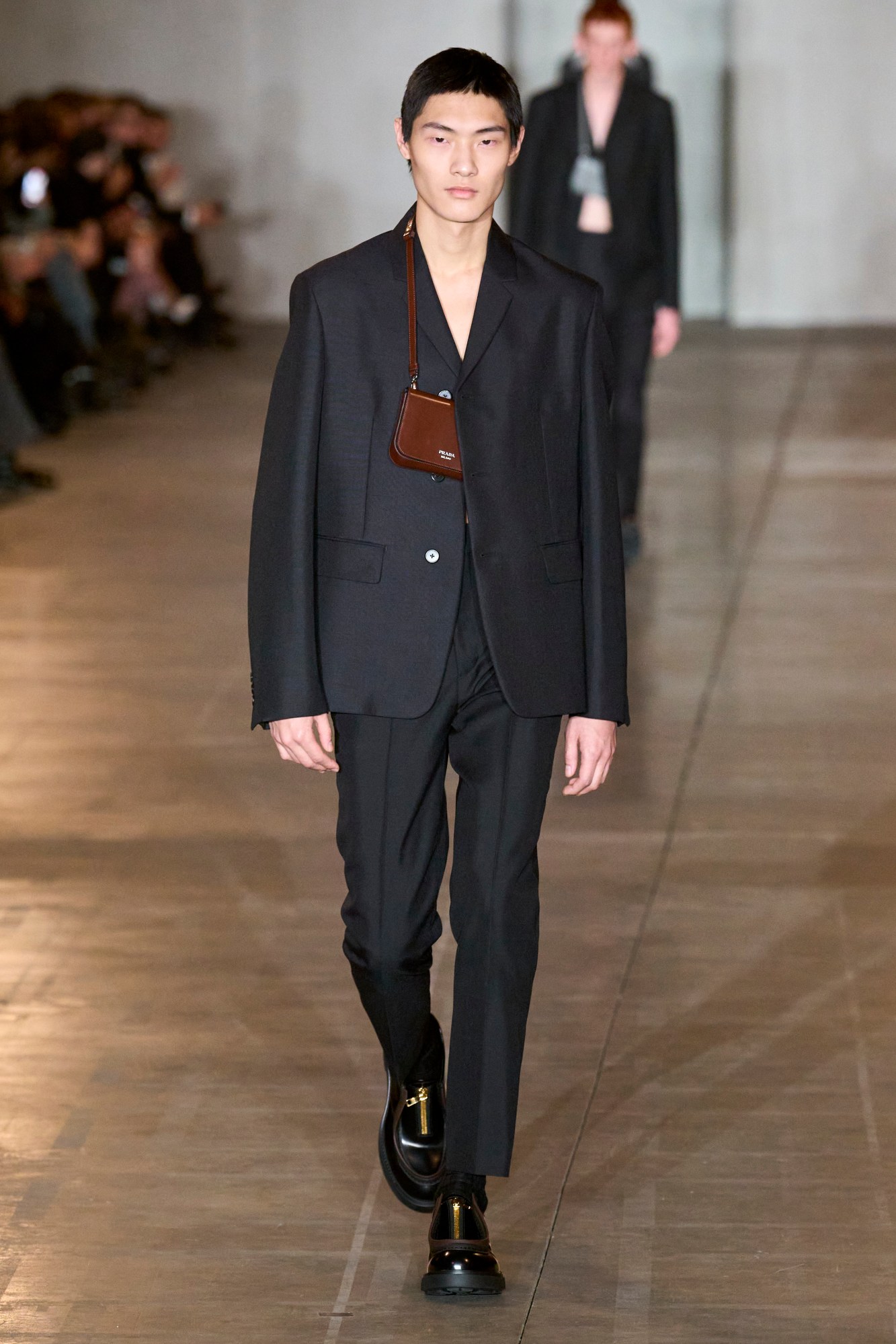
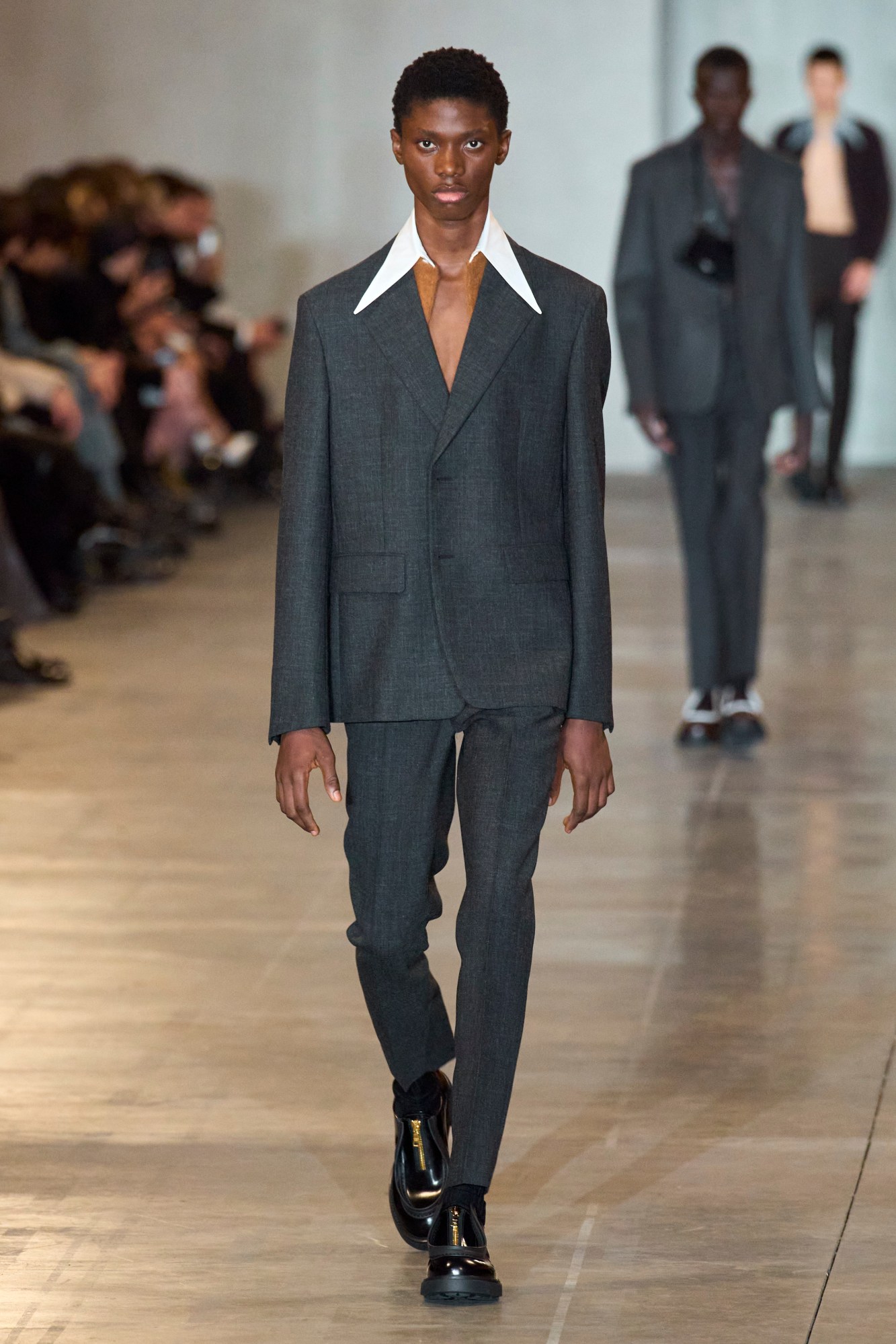
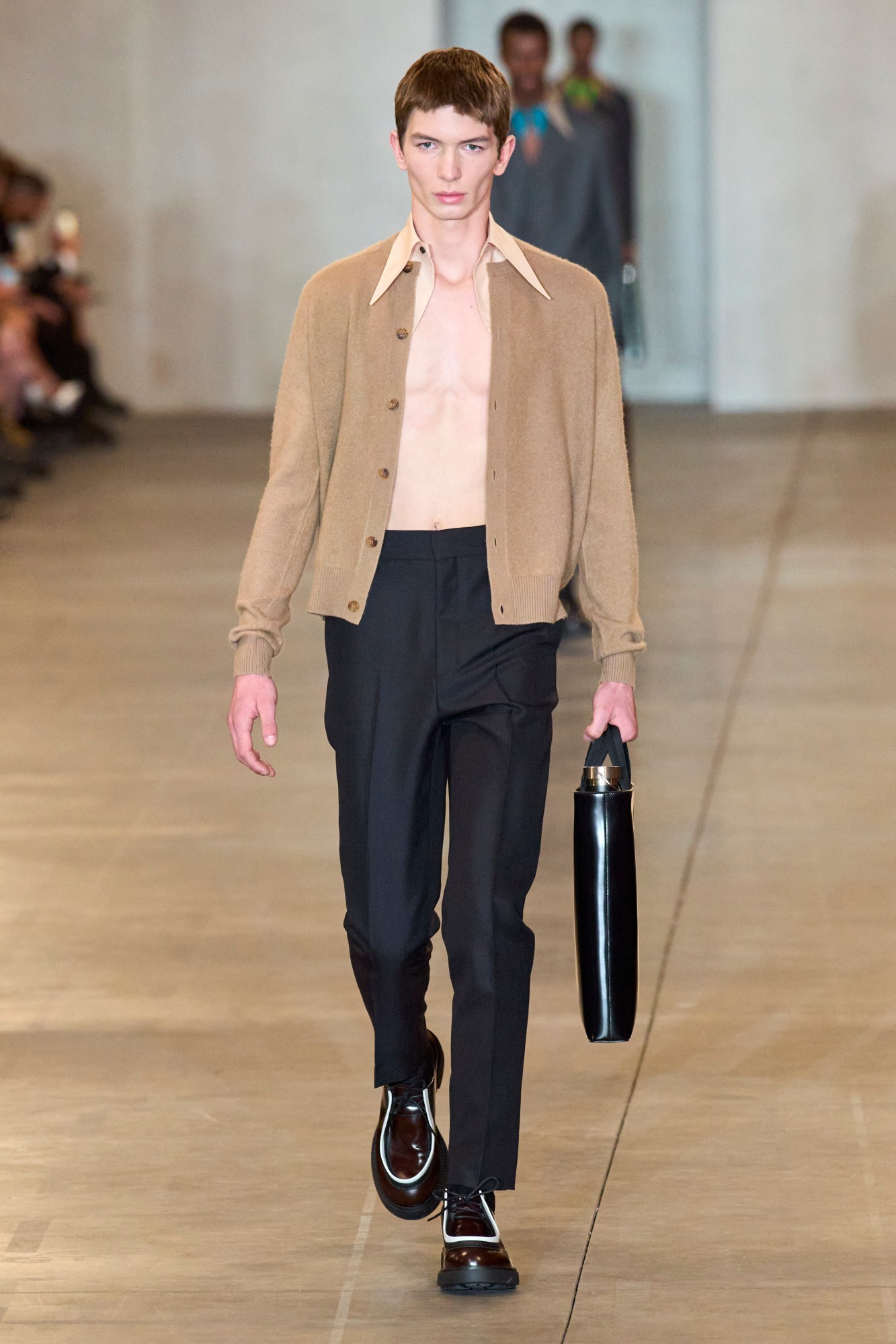
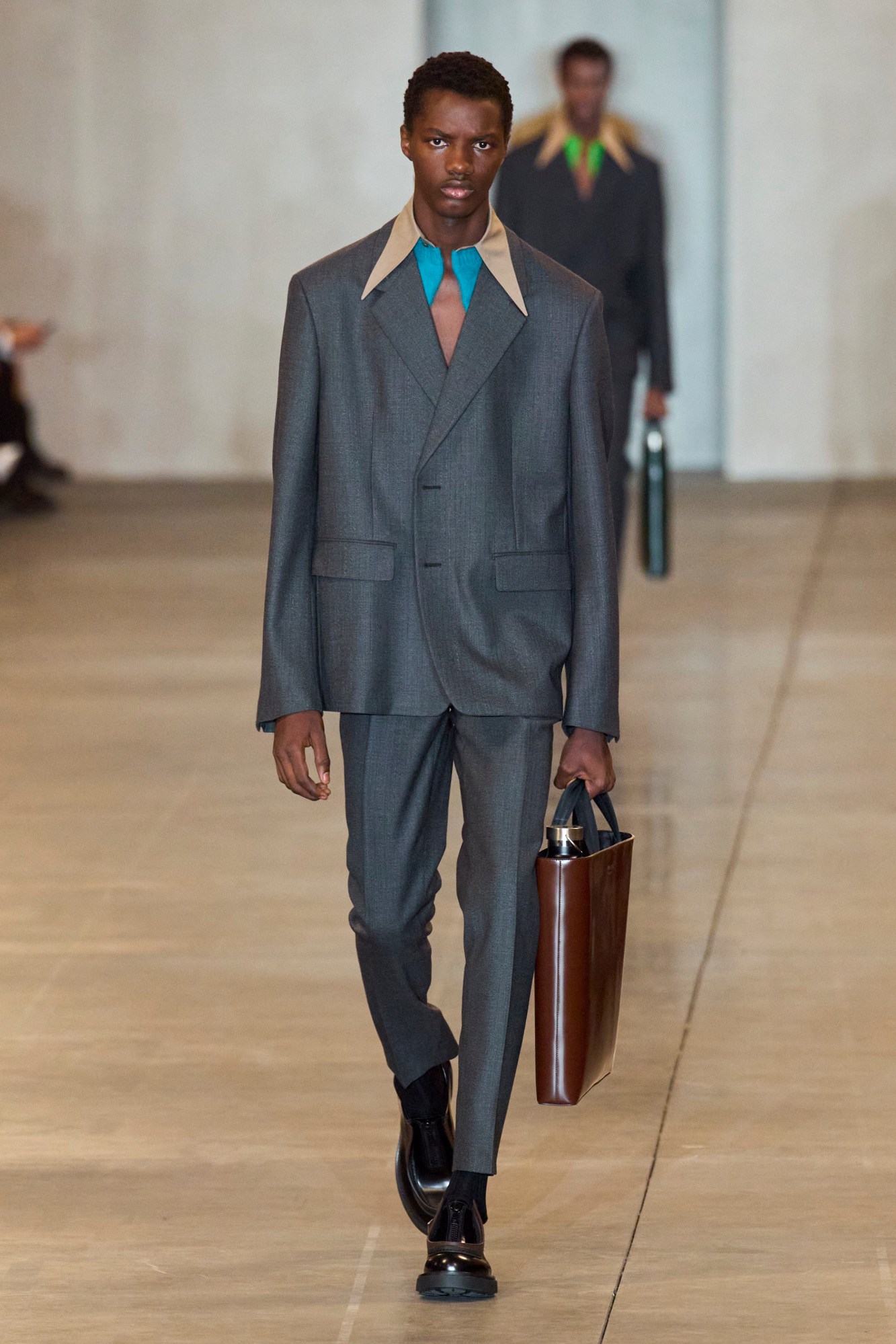
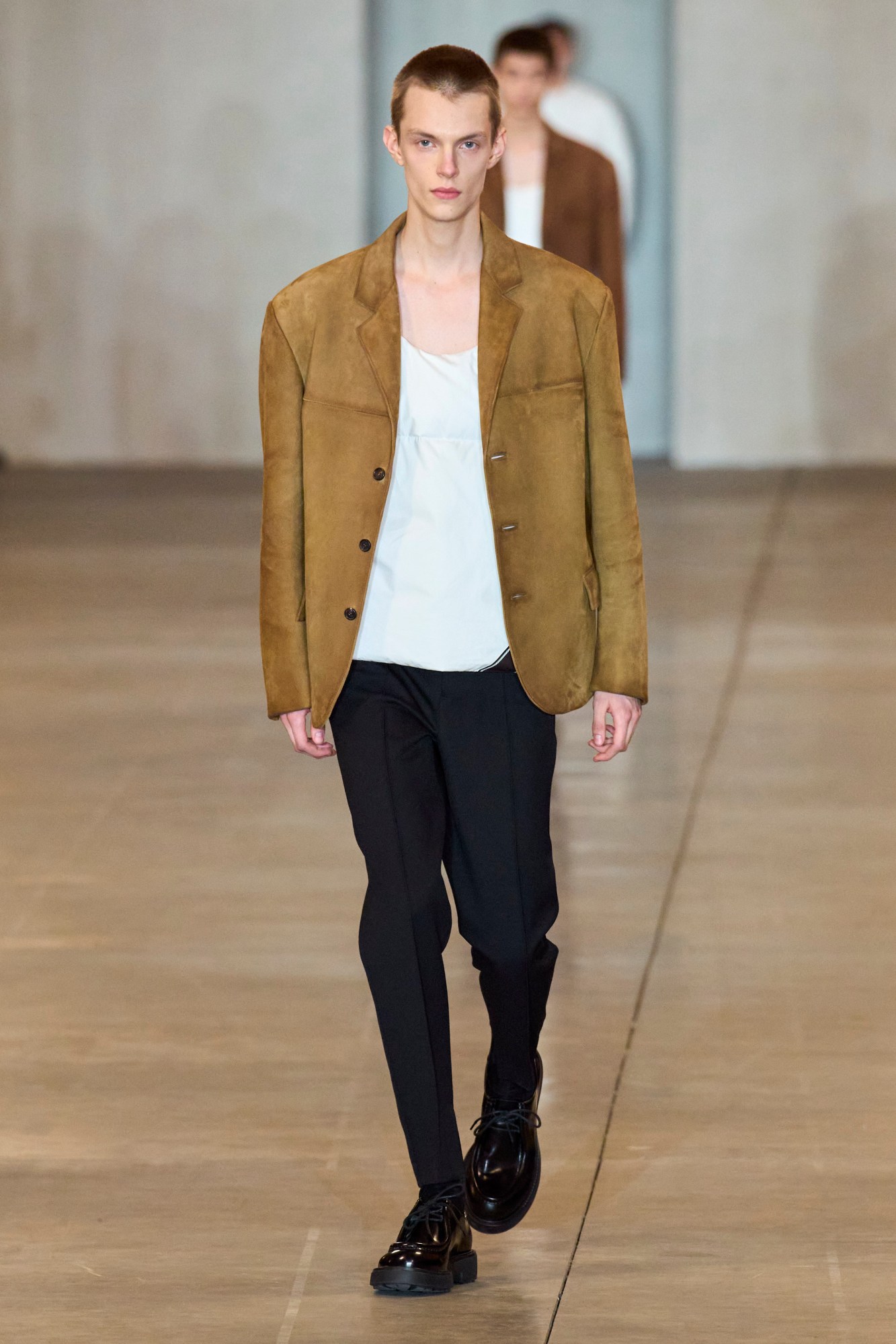
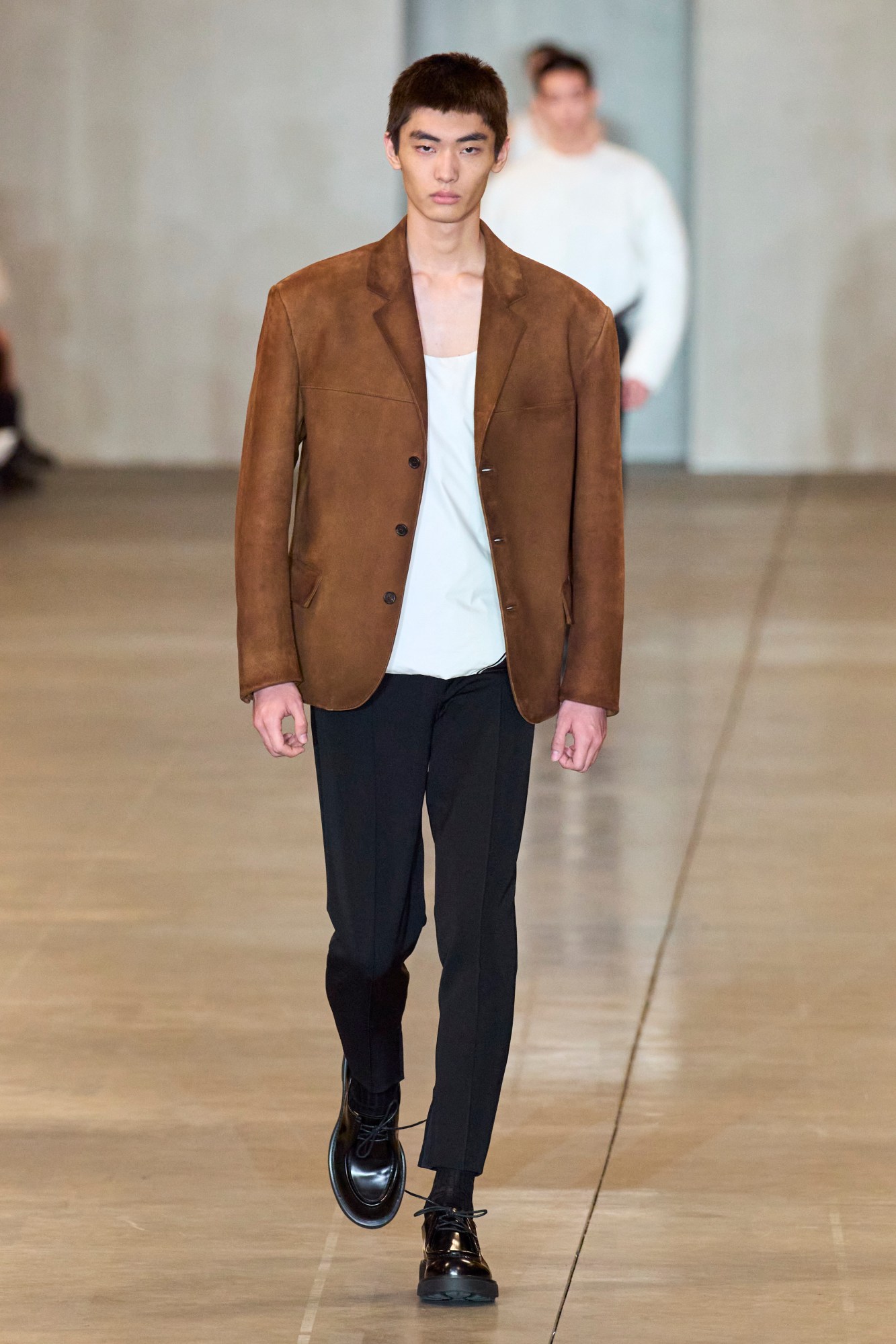
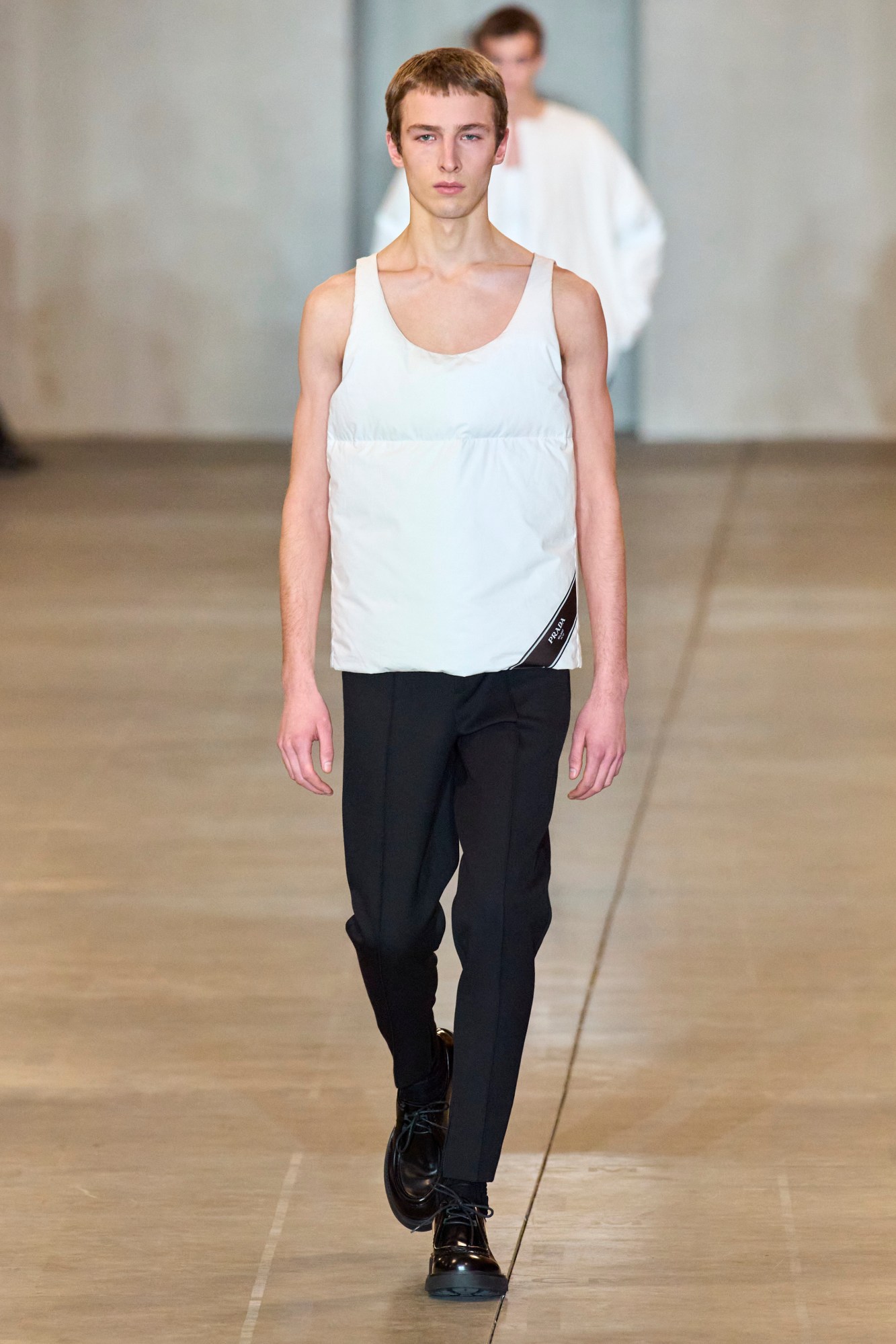
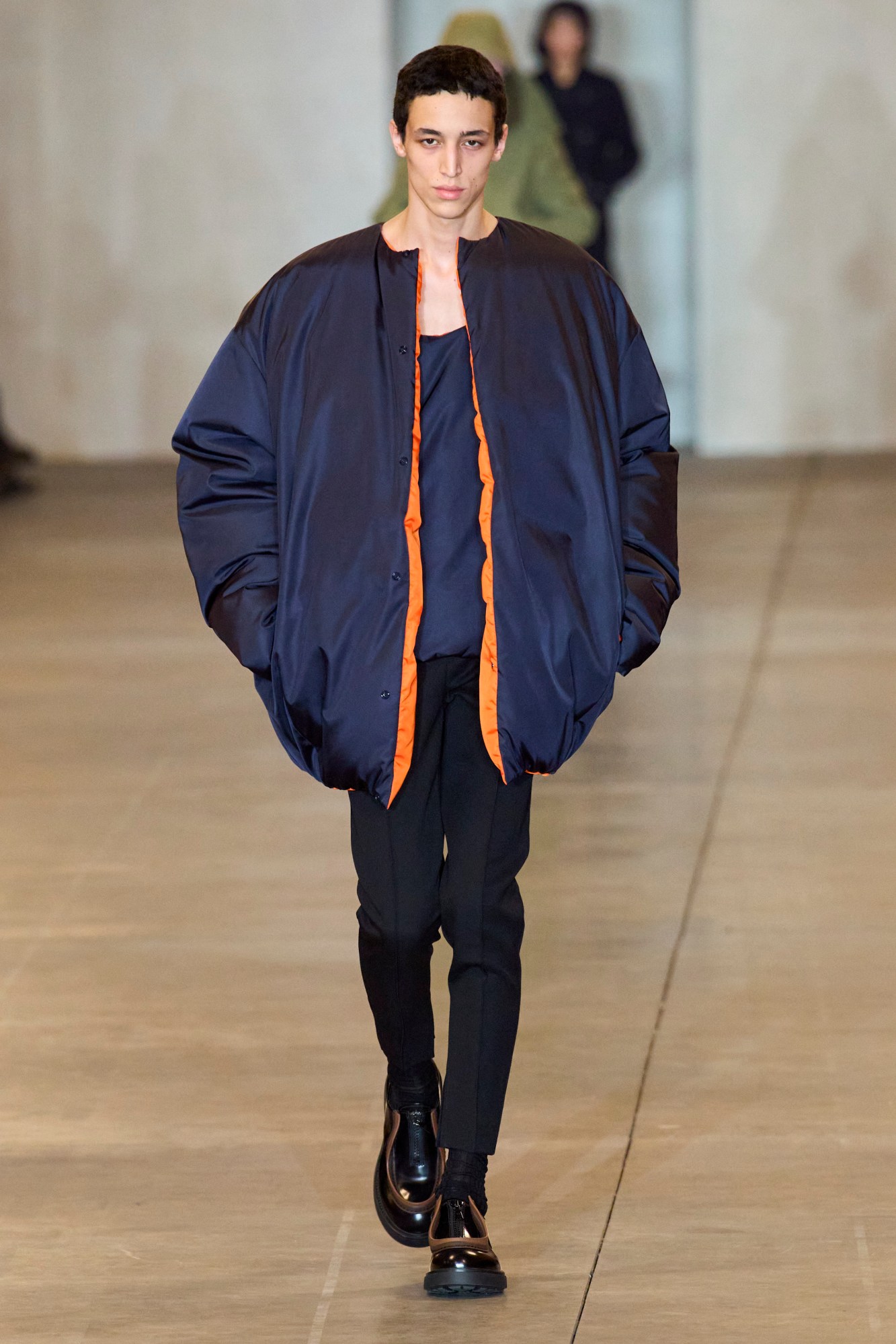
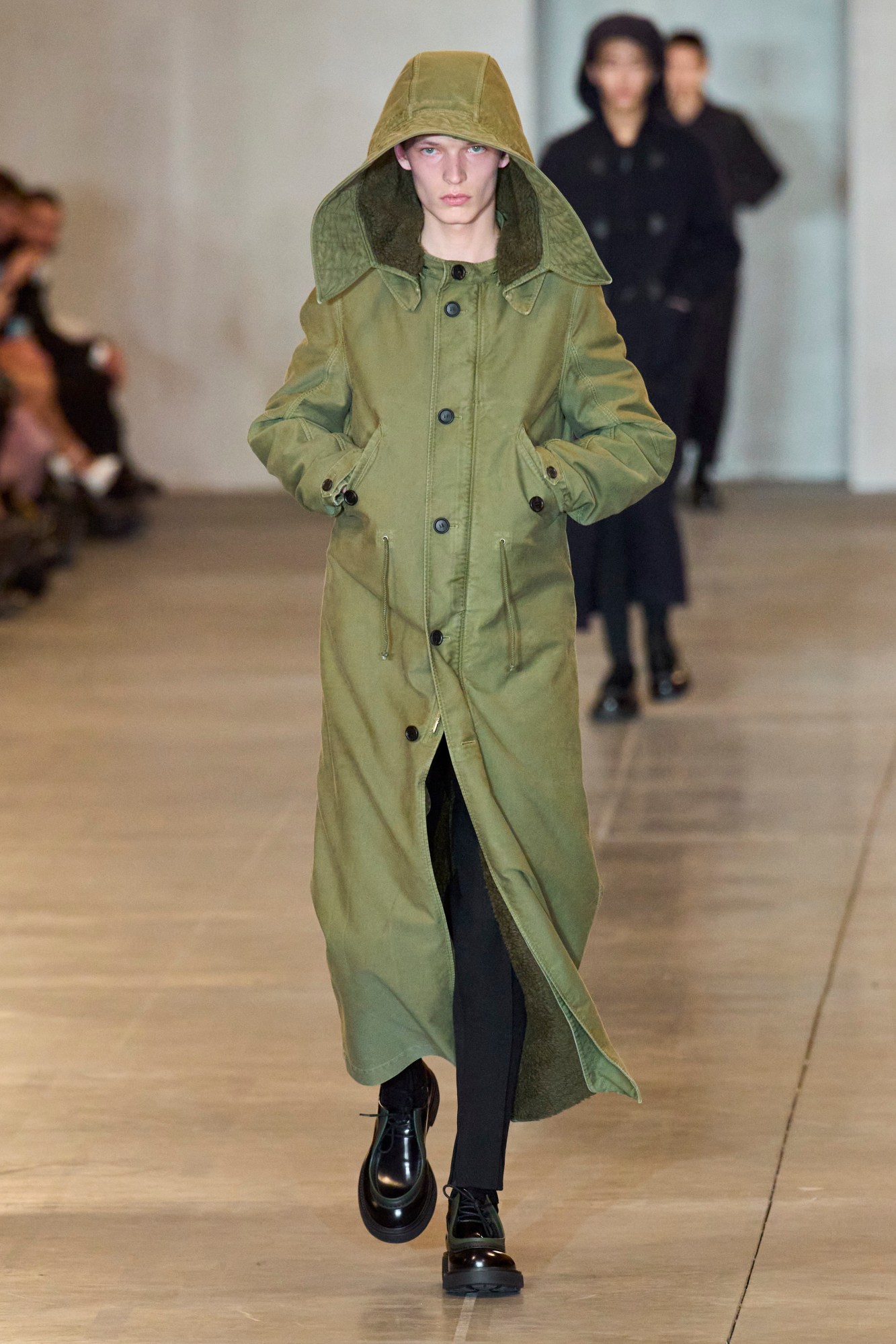
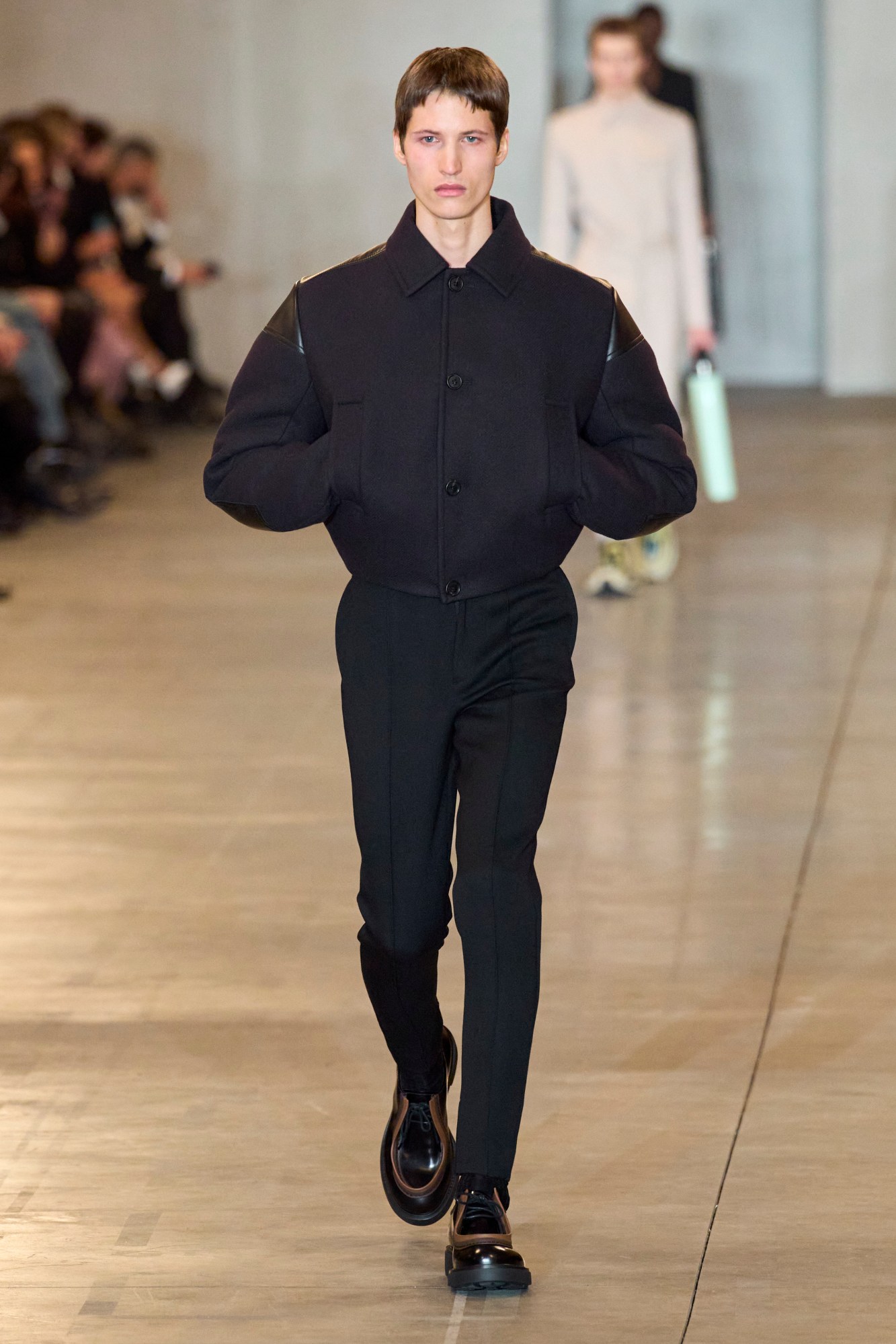

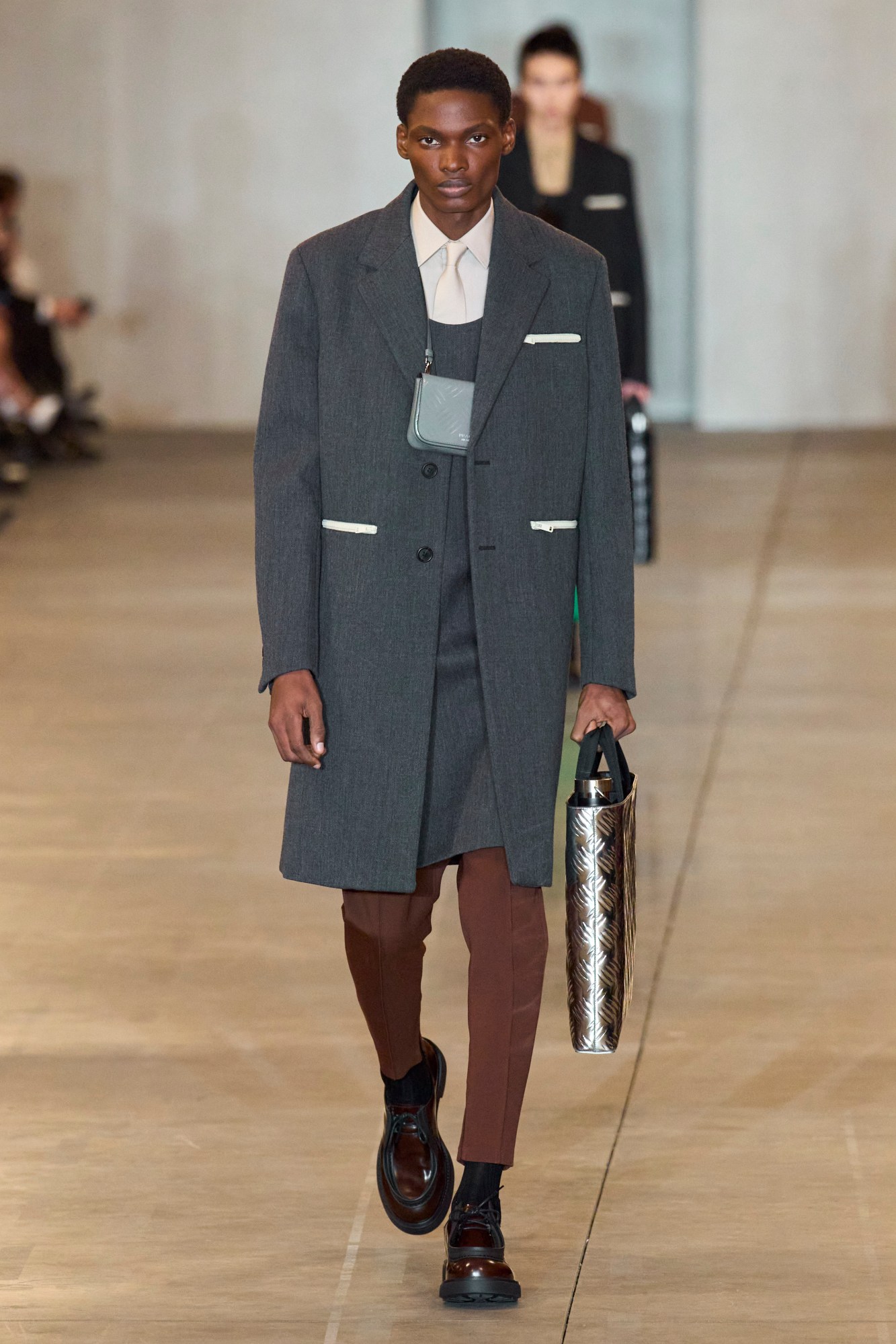
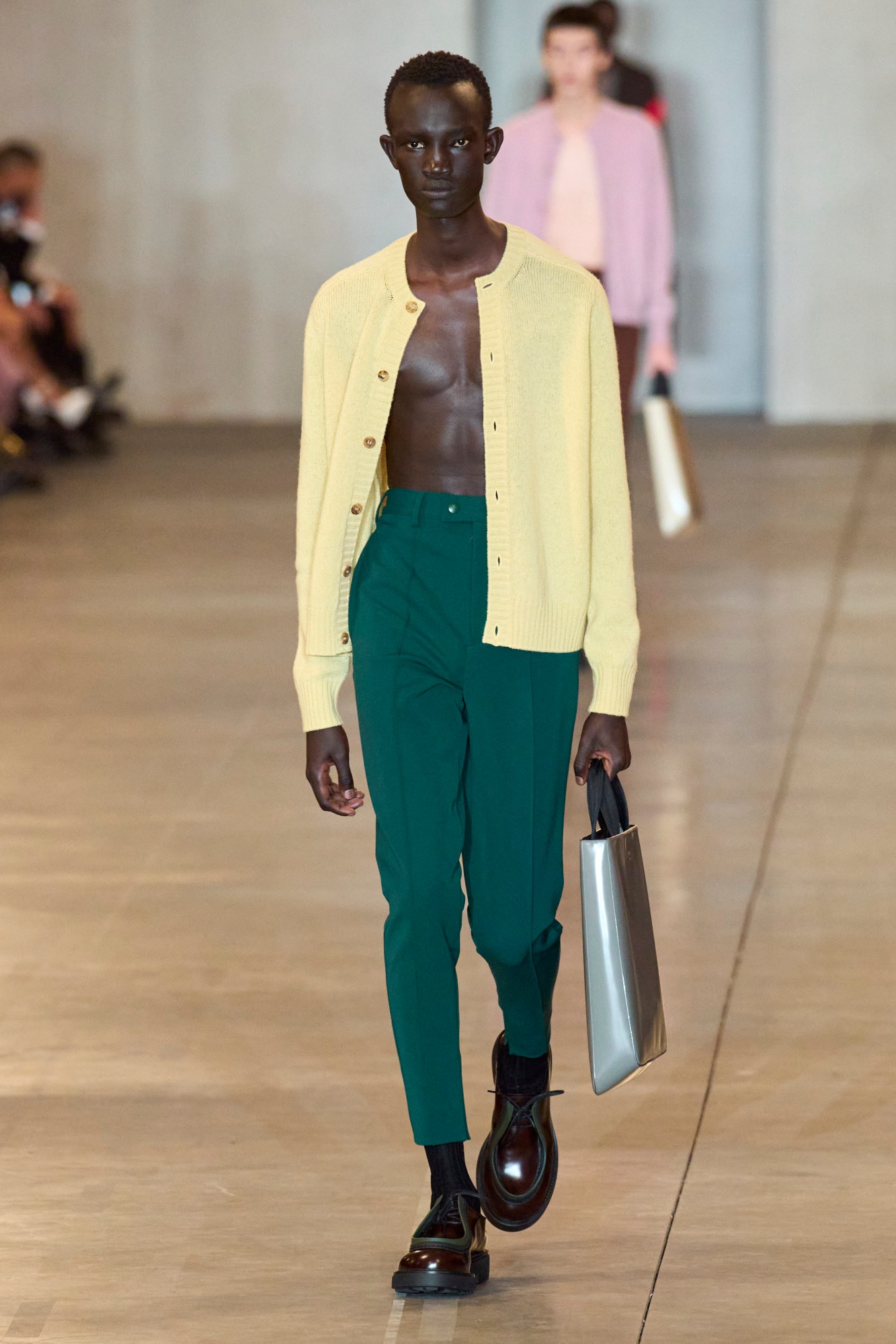

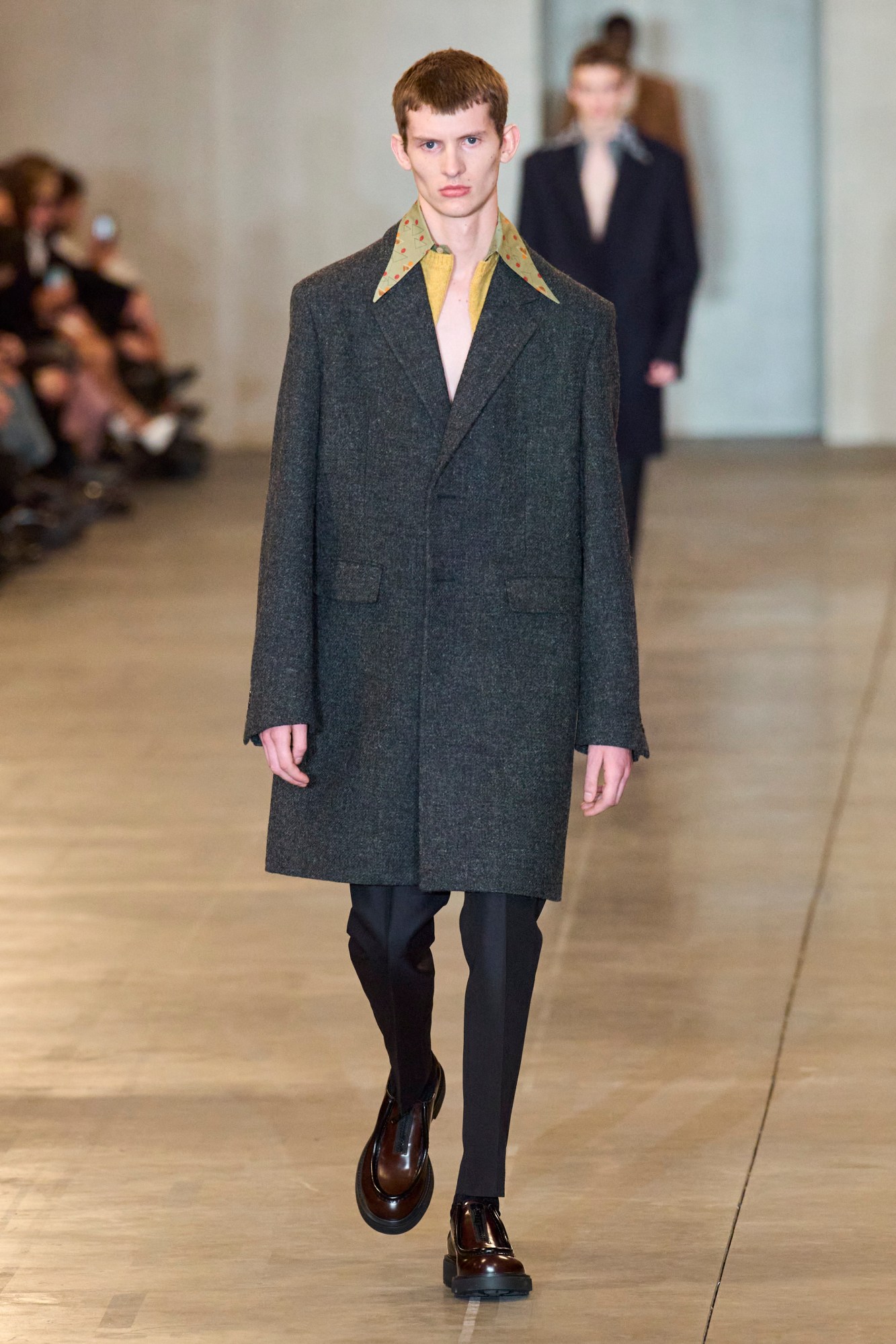
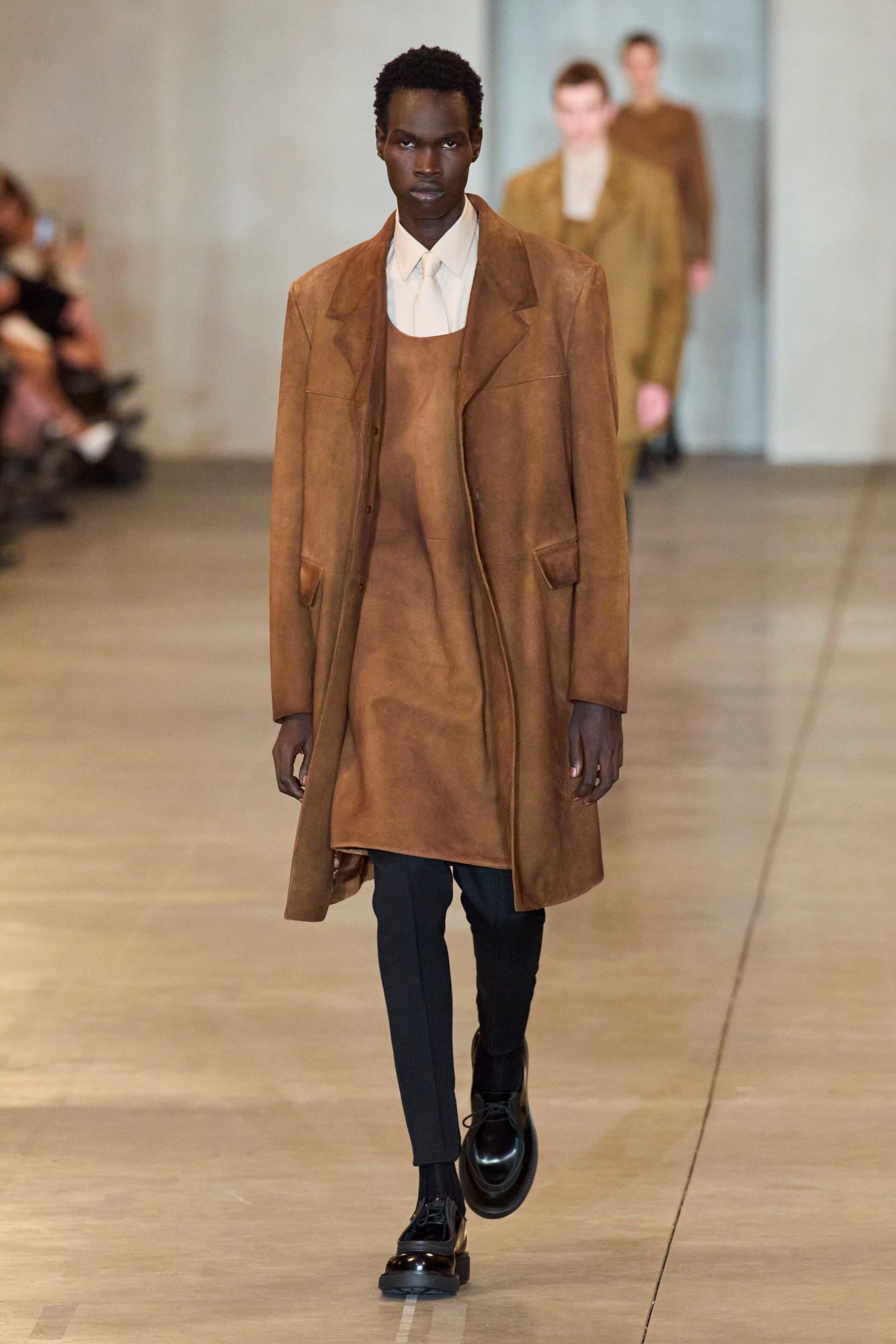
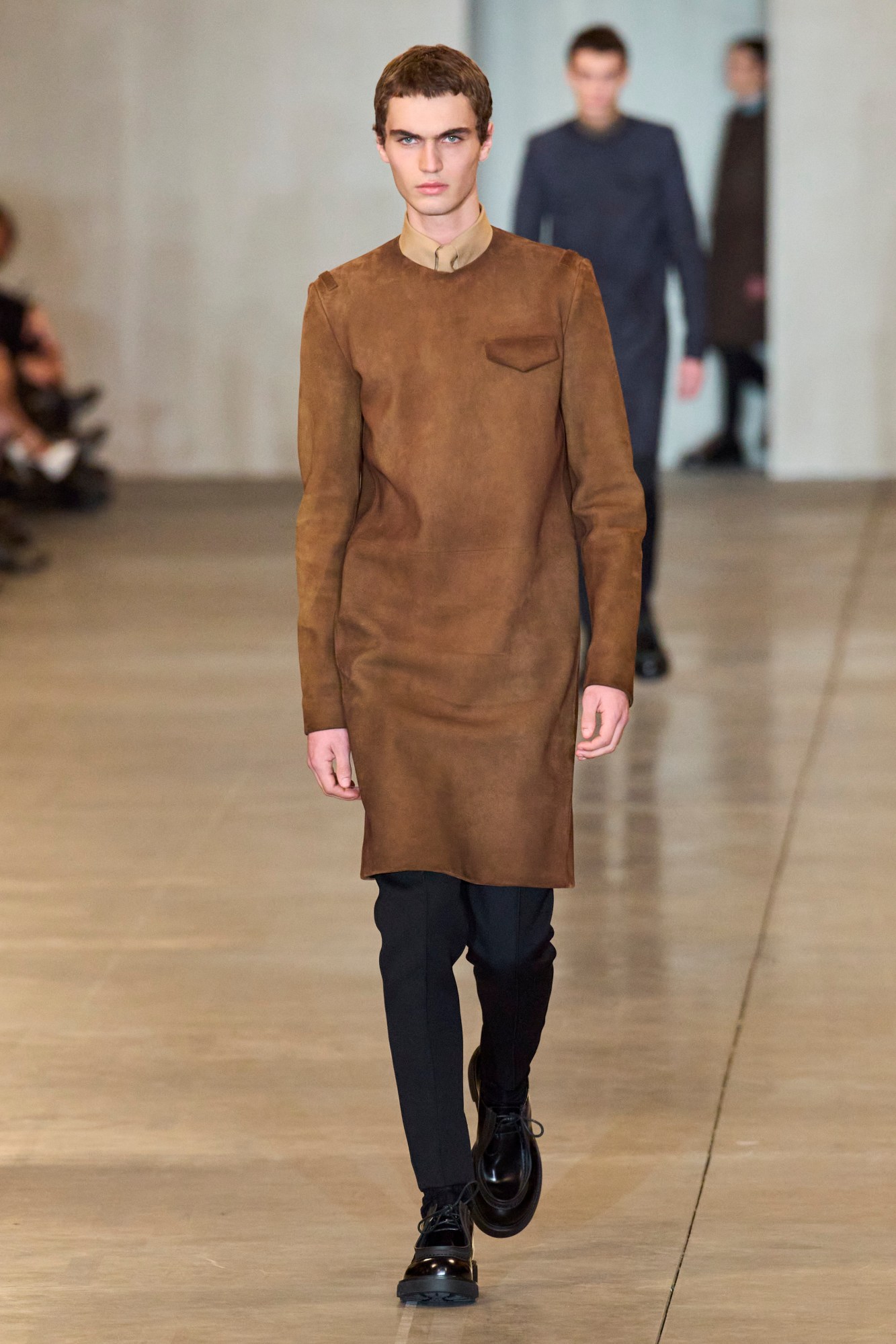
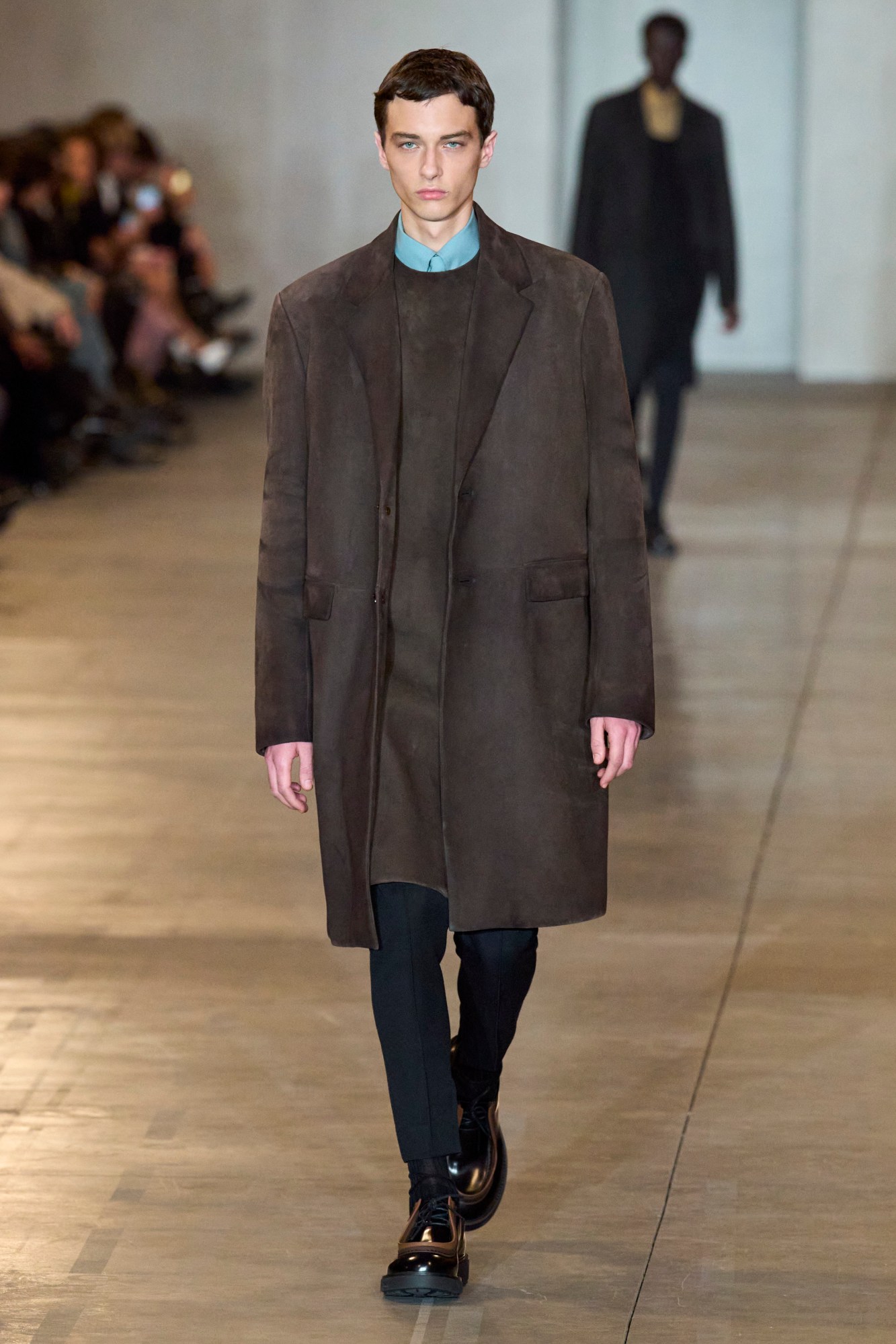
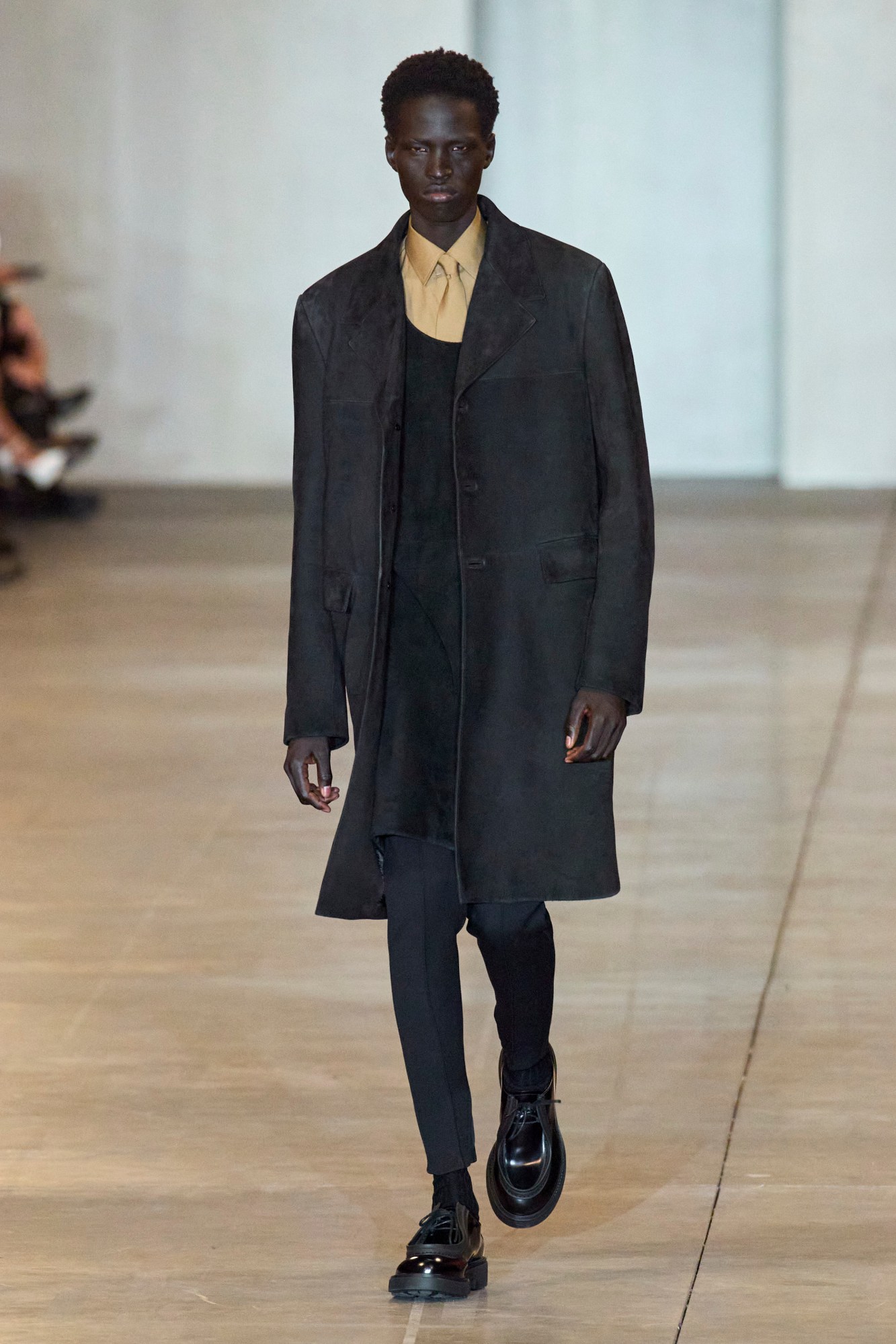
Credits
Images via Spotlight
